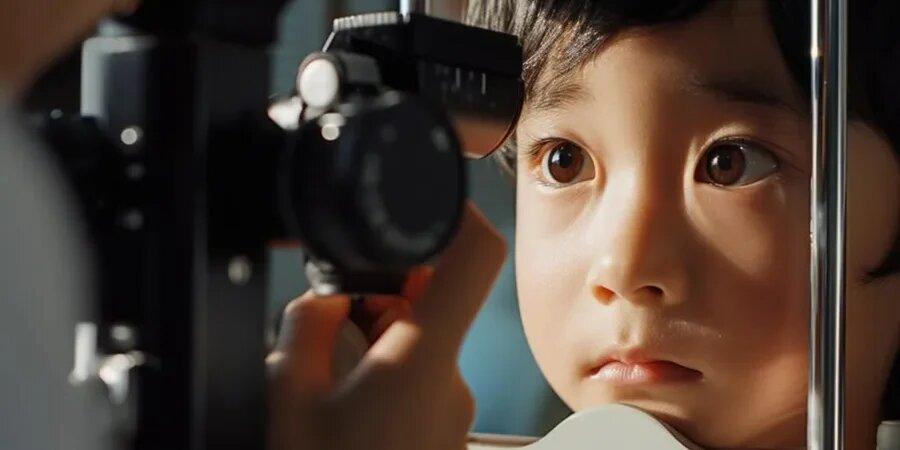Understanding Pediatric Eye Care
Children’s eyes are constantly developing, and early detection of vision problems is crucial for their growth and learning. A pediatric eye specialist is trained to diagnose and treat various eye conditions that may affect a child’s sight. Timely intervention ensures that children can enjoy clear vision, preventing long-term complications.
A child may not always realize they have a vision problem, and symptoms can often go unnoticed. This makes regular eye checkups essential. At the best eye hospital, experienced specialists use advanced technology to assess and treat children’s vision issues with care and precision.
Common Vision Problems in Children
Several vision problems can affect children, and early diagnosis is key to effective treatment. Some common issues include:
- Refractive Errors (Myopia, Hyperopia, Astigmatism): These occur when light does not focus properly on the retina, causing blurred vision.
- Strabismus (Crossed Eyes): A misalignment of the eyes that can lead to double vision and depth perception issues.
- Amblyopia (Lazy Eye): One eye is weaker due to improper visual development, often caused by untreated strabismus or refractive errors.
- Congenital Cataracts: Clouding of the lens present at birth, which can severely affect vision if not treated early.
- Blocked Tear Ducts: A condition where tears cannot drain properly, leading to excessive watering and infection.
These conditions, if left untreated, can impact a child’s learning, social development, and overall quality of life.
How Pediatric Eye Specialists Diagnose Vision Issues
A thorough eye examination by a pediatric eye specialist involves several steps. The specialist evaluates eye health and function using specialized techniques designed for children.
1. Medical History and Parental Observations
A detailed discussion with parents helps identify any symptoms the child may be experiencing. Parents might notice behaviors such as frequent eye rubbing, squinting, or difficulty recognizing faces. These signs provide essential clues for diagnosis.
2. Visual Acuity Tests
Depending on the child’s age, different methods assess how well they can see objects at different distances:
- For infants: Light reflex tests and tracking objects.
- For toddlers: Picture-based eye charts and preferential looking tests.
- For older children: Standard eye charts (Snellen chart) to measure vision clarity.
3. Eye Alignment and Movement Tests
Eye movement tests determine how well the eyes work together. The cover test, Hirschberg test, and motility assessments help detect strabismus or any muscle imbalances.
4. Refraction Tests
A retinoscope or automated device helps measure how light focuses inside the eye. This test detects refractive errors and determines if the child needs glasses.
5. Eye Health Examination
Using special instruments, the pediatric eye specialist examines the cornea, lens, retina, and optic nerve to rule out conditions like cataracts or infections.
6. Pupil Dilation
Dilating eye drops widen the pupils, allowing a more detailed view of the retina and optic nerve. While temporary blurriness occurs, this step is essential for a thorough evaluation.
Treatment Options for Children’s Vision Problems
Once a diagnosis is made, the best eye hospital provides personalized treatment plans to ensure the best possible outcome for the child.
1. Prescription Glasses
For refractive errors, eyeglasses help improve clarity and prevent further complications like amblyopia.
2. Patching Therapy for Amblyopia
A child with a lazy eye may need an eye patch over the stronger eye. This forces the weaker eye to work harder, improving vision over time.
3. Vision Therapy
This involves specialized exercises and activities designed to strengthen the eyes and improve coordination.
4. Surgery for Strabismus and Cataracts
In severe cases, surgical intervention may be required. Strabismus surgery corrects eye misalignment, while congenital cataract surgery removes clouded lenses to restore clear vision.
5. Eye Drops and Medication
Certain conditions, such as infections or amblyopia, may require medicated drops to support treatment.
6. Lifestyle and Environmental Adjustments
- Limiting screen time to prevent digital eye strain.
- Encouraging outdoor activities to reduce myopia progression.
- Ensuring proper lighting when reading or using screens.
The Importance of Choosing the Best Eye Hospital
Selecting the best eye hospital ensures that children receive expert care tailored to their needs. Pediatric eye specialists at a super-specialty hospital have advanced training and access to the latest diagnostic tools and treatment options.
A child-friendly environment, experienced staff, and a multidisciplinary approach make a significant difference in successful treatment outcomes. When choosing an eye hospital, look for:
- Specialists trained in pediatric ophthalmology.
- Advanced diagnostic and treatment facilities.
- A compassionate approach to handling young patients.
- Proven track record in treating complex eye conditions.
Conclusion:
Vision plays a crucial role in a child’s overall development. Early detection and timely treatment by a pediatric eye specialist can prevent long-term vision problems. The best eye hospital, like Maxi Vision Eye Hospital, ensures world-class care with a team of experts dedicated to preserving and enhancing children’s eyesight.
By prioritizing regular eye checkups and choosing a trusted eye hospital, parents can give their children the gift of clear vision and a brighter future.
